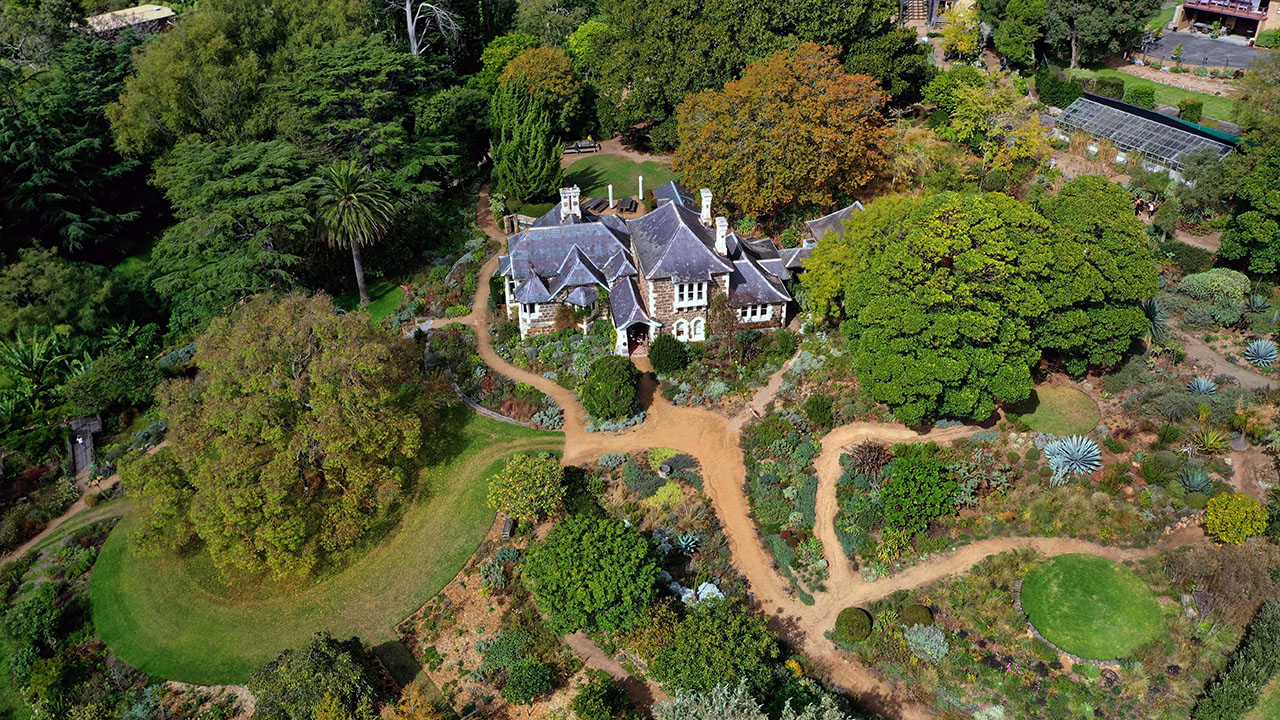
Above: A recent aerial photograph of ‘Heronswood’
By Ilma Hackett, Balnarring & District Historical Society
It was the fairy palace with an enchanted garden. So thought young Margaret Sutherland when visiting ‘Heronswood’, her uncle’s country home in Dromana, back in the 1890’s and today the property still retains something of that magical quality.
Hearn’s Dromana retreat
The main house at ‘Heronswood’ was built in 1871 as a country retreat for academic William Edward Hearn, one of the first four professors appointed to the University of Melbourne. Hearn, an Irishman, was born in 1826 and had graduated from Trinity College, Dublin. A brilliant lawyer and classicist, he was offered a position at the newly established university in Melbourne at a salary of £1,000 plus lodgings. He arrived from Ireland to take up his position in 1855 accompanied by his wife and children. Widely read and witty, he proved a popular, influential lecturer in a wide range of courses. When the Law Faculty was introduced in 1873 he was appointed dean. Hearn was a prize-winning author in his field of political economy, publishing books, lectures and pamphlets that brought world-wide recognition to the new university. As well as his work at the university, he also took a prominent role in local politics and public affairs and contributed anonymously to the ‘Argus’ and the ‘Australasian’.
Hearn bought just over 46 acres (18.6 hectares) of land at Dromana in 1864. His land was on the lower slopes of Arthurs Seat, with views of the bay and the bulk of the mountain behind it. Here he engaged Edward La Trobe Bateman to design a house for him.
Bateman was an artist, botanical illustrator, designer of gardens and an architect with an eye for beauty. In England he was a friend of the William Howitt family and the pre-Raphaelite group. He had followed Howitt to Australia, to the gold fields, in 1852. Bateman’s interest was not so much in finding gold but in broadening his experiences. In Victoria he engaged in a number of projects and held, for a time, a position with the leading architectural firm Barnes and Reed.
The first structure built for Hearn in 1864 was a four-roomed cottage. It was a drop slab building with rough hardwood posts between which planks were inserted diagonally. The massive fireplace and chimney were of stone. The cottage had a hip gable roof of hardwood shingles, the eaves of which turned upwards in oriental style. This building became the kitchen after the stone homestead took form. This main house was built of local materials, the stone used being the unusual, green-blue granite quarried from Arthurs Seat and cut into large blocks. Doorways, windows and corners were accentuated with contrasting, sand-coloured limestone from the southern peninsula.
The house was an asymmetrical two-storey building, roofed in bluish-grey Welsh slate. One section of roof, like that of the earlier building, tilted upwards at the eaves. The exterior walls were 50 centimetres thick, the inner ones 20 centimetres and with its turrets, buttresses and tall, narrow windows that curved to a point it was reminiscent of medieval castles. The house had seven bedrooms, a study and two main living rooms, one a dining area.
George Chapman, the builder, lived near the top of Arthur’s Seat and the small dirt track that led from his house to ‘Heronswood’ was later widened. After the building was completed, Chapman continued to work at the property as gardener.
The house was just one part of Bateman’s design. The gardens were of equal importance –house, site and garden were seen as one. The design for the garden included spacious areas of lawn and rare exotic trees. There was an orchard area where apples, pears and mulberries were grown. Pine trees lined the driveway and were planted as windbreaks.
The property became known as ‘Heronswood’, perhaps a corruption of “Hearn’s Wood” or perhaps alluding to the family motto, “The Heron Seeks the Highest.” It provided the refuge Hearn sought where “he could work in the sunny drawing room in that favourite recess of his, the bow window of his charming home”.
After Hearn’s death in April, 1888, his wife did not keep the property. The ‘Age’ newspaper carried a notice on Saturday, 3 November for the sale of ‘Heronswood’: “ . . the favourite seaside resort of the late Dr Hearn, containing about 351/2 acres laid out in shrubbery, orchard, garden and meadow on which is erected a handsome and substantial Gothic stone residence”.
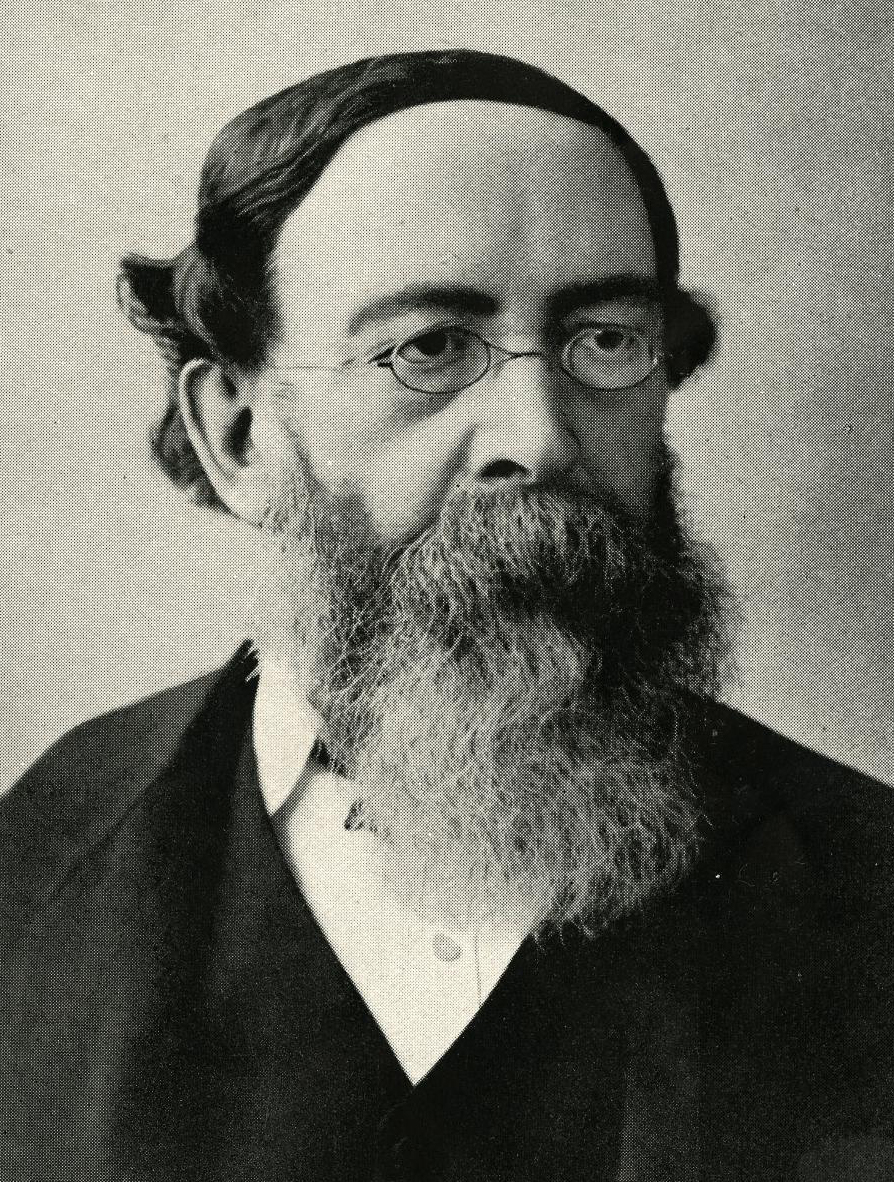
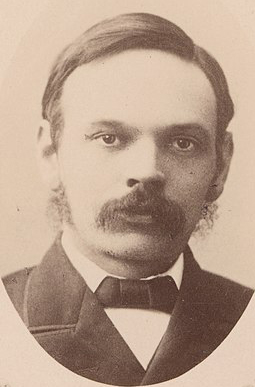
Sutherland buys the ‘charming home’
‘Heronswood’ was bought by Alexander Sutherland, a former student of Dr. Hearn who, according to his niece, planned to retire at the early age of forty and devote his life to literature and scientific investigation. He and his family moved into the fairytale house at Dromana.
Sutherland had married Elizabeth (Lizzie) Ballantyne in 1879 and the couple had a son and three daughters. A man of medium height, Sutherland could indulge in a favourite past-time, bushwalking, at his new home. He also liked to sketch and was a lover of music. At ‘Heronswood’ he and his family kept the lower level of the house for themselves and the two upper rooms were set aside for company.
A Scot who arrived in Australia in 1866, Sutherland had held various teaching positions since his early years in Sydney when, at the age of fourteen, he became a pupil-teacher. He graduated with honours in Arts from the University of Melbourne in 1874 and in 1877 had taken over Carlton College, a successful school that brought him a good income. At his seaside home he had written the first volume of ‘Victoria and its Metropolis’ in 1888 and the following year, ‘Origins and Growth of the Moral Instinct’, a two-volume work of philosophy that was well received overseas. He then decided to retire from teaching.
However, Sutherland’s retirement coincided with the 1892-3 depression forcing him to earn an income from his writing. He published short stories, biographies and poems and wrote articles, mainly on politico-economic subjects, for the ‘Argus’ and the ‘Australasian’.
As his children reached the age for secondary schooling the family returned to Melbourne and for a period Sutherland went to London as correspondent for an Adelaide newspaper. He found the climate depressing so returned to Melbourne. In 1901 he won a seat in the first federal parliament and the same year was appointed Registrar of the University of Melbourne. He also took over as lecturer in English and English Literature which was too heavy a load. Sutherland was in Adelaide when he unexpectedly died in 1902 at the age of fifty.
Home to a High Court Judge
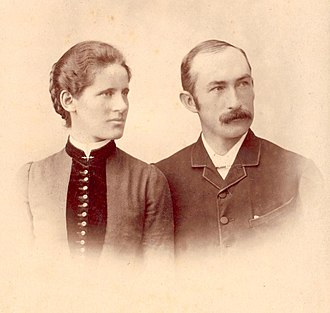
Above: Henry Bournes Higgins with his wife, Mary
Lizzie Sutherland decided to sell ‘Heronswood’ and in 1906 it became the home of Henry Bournes Higgins, a friend of her husband’s from university days with whom he had once shared the Shakespeare scholarship. Both had been students of Dr. Hearn. Like Hearn, Higgins was born in Ireland and, like Sutherland, his family had come to Australia for health reasons. Also, like Sutherland, he had taught before entering the university where he shone in languages, history, logic, political economy and Shakespeare. He graduated with degrees in both Arts and Law and chose law as a career, specialising in equity. He prospered as a lawyer and his success allowed him to help his siblings through university.
In 1883 he bought land in Malvern where a house, ‘Doona’, was erected and two years later he married Mary Alice Morrison, a tall, young woman whose sense of duty, it was said, was combined with a sense of humour. Their only child was a son, Mervyn.
Higgins turned to politics and was one of the ten people chosen from Victoria to help draft the new Commonwealth Constitution. He was elected, in turn, to both the state and then federal governments but he quit politics when he was called to the bench as a High Court Judge in 1903. He had a reputation for upholding his principles even when contrary to general opinion. Higgins became President of the Commonwealth Court of Conciliation and Arbitration in 1906 and is arguably best known for his judgement in the Harvester Case which led to a basic wage for unskilled workers.
When Higgins bought ‘Heronswood’ in 1906 it was with his son’s enjoyment in mind. Visitors were frequent and entertainment lavish. A ‘Log Book’ was kept in which guests signed their names. Some contributed poems. An invitation to an informal dinner began “Oyez! Oyez! Oyez! Be it known that a Feed will be held at 5.30 p.m. on Saturday 24th February in the Year of Disgrace 1906”. The menu included “Kangerong Tail Soup”. The grounds now sported a tennis court and the family had bathing boxes on the nearby beach. Higgins was enthusiastic about the Dromana district. He made a donation to the Foreshore Trust towards putting in diving platforms and for other foreshore improvements.
‘Heronswood’ also became his retreat and he delighted in the physical activity of working about the property. He recorded, “Today I was haymaking. My man scythed the crop of oats and I gathered and raked into stooks”. He revelled in the beauty of the setting and gardens. Mary’s brother, George “Chinese” Morrison, a journalist, adventurer and political advisor to the Chinese government, sent them a pair of porcelain Chinese Lion Dogs which guarded the entrance to the cellar. In 1912 and again in 1914 bushfires came close to the house and gardens but were contained using water from the dam.
The Higgins family was in England when the First World War broke out. Although an ardent pacifist, Higgins believed England had no option. His son enlisted. Mervyn Bournes Higgins survived Gallipoli but was killed in Egypt in 1916. Higgins, heart-broken, stated, “My grief has condemned me to hard labour for the rest of my life”. A monument, a tall Celtic cross, was erected in the cemetery at Dromana, and Higgins also donated a scholarship to the University of Melbourne in his son’s name.
Higgins was a fitness adherent perhaps because, as a child, he had been prone to illness. At Dromana he swam each morning and, in the afternoon, took a long walk from his house to Arthurs Seat and back. On 13 January, 1929 he followed his usual routine, returning home to sit on the porch with his books. He died that evening. His funeral was held at Dromana where he was buried alongside his son’s monument on the slopes of the mountain overlooking the bay. He is remembered as a great humanitarian and an outstanding judge. The ghost of Mary Higgins is said to haunt one of the back rooms of the homestead, a friendly presence watching for her son. Others say it is the ghost of her husband.
In 1930 the magnificent seaside residence was offered for sale by auction. Included were the excellent dam which supplied the property with water, the asphalt tennis court and the fact that it was six minutes from the beach. ‘Heronswood’ was offered on a walk-in walk-out basis which included household linen, tools, a spring cart, horse and cow. It was passed in at £4,500.
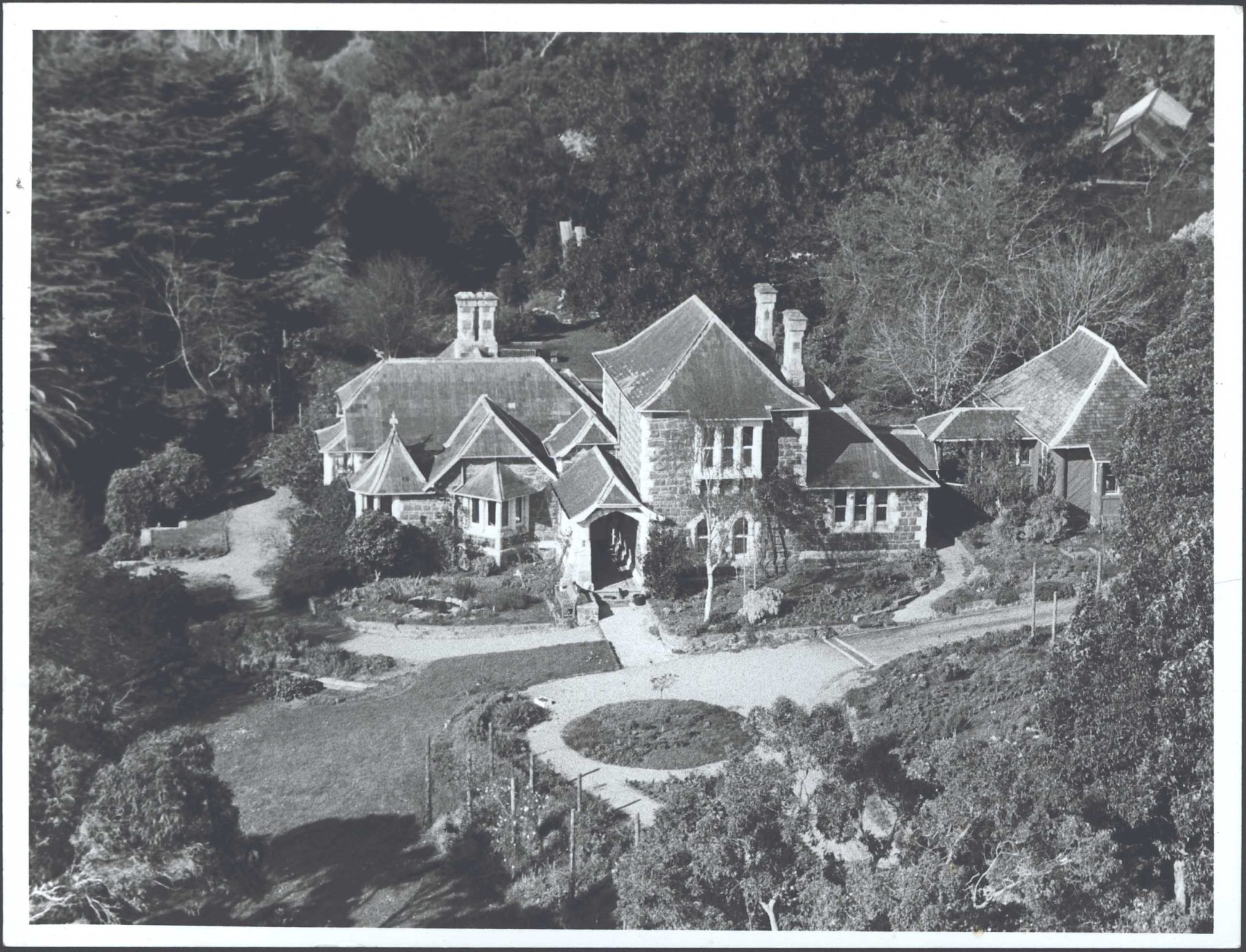
Above: ‘Heronswood’, circa 1930
A new era
House and gardens were eventually purchased in 1932 by Anne and William Farey of Deepdene, with the property in Anne’s name for taxation purposes. William Farey had a bakery in Bourke Road, Camberwell and the family intended using ‘Heronswood’ as a holiday home. A few minor alterations were made inside the house and an additional outdoor toilet was built; otherwise the property remained the same. The tennis court that Higgins had installed was brought back into use.
In 1939 the house narrowly escaped being burned down in the bushfire that raged through the area that January. At first believed to have originated on a corner of the property, the fire, fanned by 60 kilometre per hour winds, swept along the foot of the mountain until a change of wind direction turned it towards the township of Dromana. Despite the efforts of the firefighters, the fire burned to the shore line, destroying virtually everything in its path. Forty-three houses were lost and many people were left with just the clothes they were wearing. ‘Heronswood’ was lucky to escape.
The Fareys kept the old homestead for almost twenty-eight years before it again changed hands.
A time of change
John (Jack) and Ada Wilson bought the property on 5 November, 1958. Jack was a master butcher whose links with Dromana dated back to his great-grandfather who had opened a butchery there. He had always been fascinated by the ‘Heronswood’ property. Major changes occurred during their ownership. Wilson sold off twenty of the thirty-five acres for subdivision in 1962 and further land was compulsorily acquired for the future freeway along the peninsula. The section of land known as “The Valley” was taken by the Council as a drainage easement, leaving the house on three and a half acres (1.4 hectares).
The house urgently needed an upgrade. Local tradespeople were hired to strip wallpaper, remove old varnish and to make repairs both to the building and the furniture that had come with the house. The main room housed two long sideboards and the walls were hung with four large, oriental, silk tapestries. The seats of chairs needed re-upholstering. The goal was to restore as much as possible although changes were made. The kitchen, previously housed in the small wooden cottage, “the log cabin”, was moved into the large house and the cottage became a laundry where Ada washed Jack’s work clothes. It was close to the house, accessed by steps leading to the door.
The gardens changed. The orchard area had been sold. Cypress pines lining the driveway and located near the house were cut down as they were seen as a fire risk and replaced by Queensland box. White camellias were planted. The garden’s feature stone wall was extended and the original decorative tile work re-arranged to disguise gaps left by missing tiles. The Lion Dogs still stood by the cellar door although in need of repair.
In 1974 Wilson sold ‘Heronswood’ to Mr. T. Shugg. Along with the century-old building Shugg inherited the many artefacts belonging to previous owners which he did not want to keep. He disposed of them including the library of law books.
When the Moffat family owned the property, prior to 1983, a kidney-shaped swimming pool was sunk into the back lawn. The kitchen was again relocated and two modern fireplaces were installed in the dining and sitting rooms. These were made from old limestone blocks.
A dream becomes reality
Clive and Penny Blazey bought ‘Heronswood’ in 1983 and gradually turned it into the ‘Heronswood’ of today. They intended to use the property not only as their family home but as a focus for Diggers Seeds, their business of propagating and selling heirloom seeds. Diggers Seeds had started in a stable in Mont Albert in 1978 when Clive wanted to rescue varieties of vegetables no longer in fashion and so not stocked by nurseries.
Their attempt to establish their nursery at ‘Heronswood’ was not plain sailing. Neighbouring property owners, alarmed about a business close by, opposed the plans put before the Shire council. Concerns centred around estimated visitor numbers, parking, and inappropriate use of land in a residential area. The matter eventually went to the Minister for Planning and before an independent panel for decision. Objections were overruled.
The Blazeys set about altering the gardens to become a showcase for their unusual and old-fashioned plants. Edible plants were grown for beauty as well as consumption. Attention was paid to the overall colour and effect on landscape. Clive Blazey believed in using organic and sustainable methods of cultivation, definitely no pesticides, and the principle of working with nature rather than against it. Diggers Seeds, which began as a mail order business, evolved into the Diggers Club with ‘Heronswood’ as its base. Membership grew rapidly Australia-wide.
The Blazeys also worked on restoring the homestead building. This included undoing recent renovations. The stone fireplaces were removed to reveal the original carved wooden ones. In 1997 the whole building was re-decorated in keeping with the original Gothic Revival style. ‘Heronswood’ was given the status of a classified home and placed on the Historic Building register.
In the grounds the swimming pool became two separate ponds – a water lily pond and a reflection pool. The grounds developed into a cottage-style garden where a number of separated garden beds showcase the annuals and perennials from the nursery. Grassed or gravelled walkways lead from area to area while between the mature trees that have been part of the garden from earliest years, the waters of Port Phillip Bay can be seen. Several of the trees – a magnificent Cook Island Pine and a Moreton Bay fig – have provided shade for over a century and a half. ‘Heronswood Garden’ is one of the few Australian properties mentioned in the ‘Oxford Book of Gardens’ which celebrates the best gardens around the world.
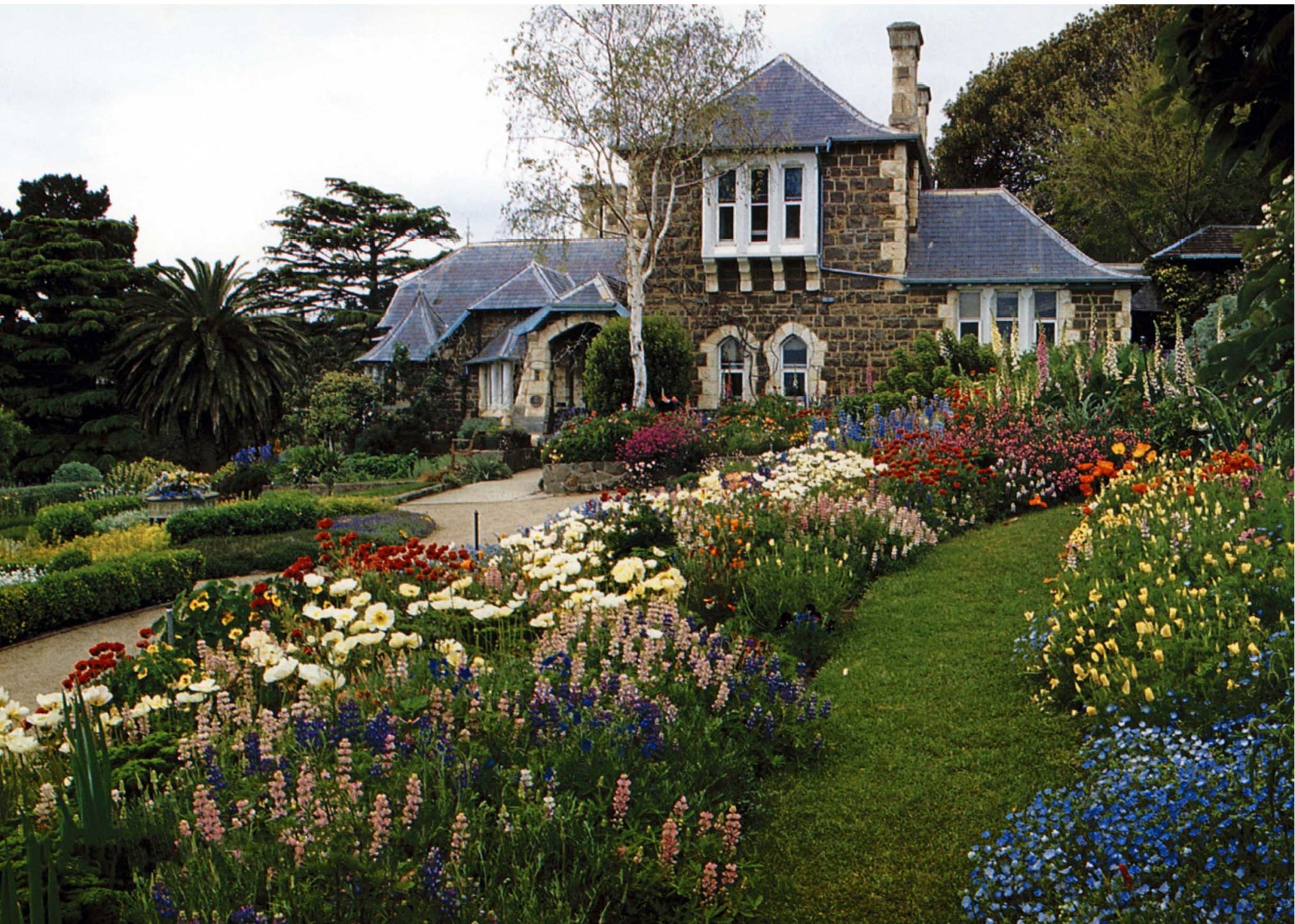
The gardens at ‘Heronswood’
The recent story
A new structure housing a restaurant, shop and office was opened in 1996. It was designed to blend in with the existing buildings. A two-storey building, its walls were of rammed earth and the roof thatched using reeds from the Tootgarook Swamp. Two skilled thatchers from Northern Germany worked on the roof. A sprinkler system was installed in case of fire.
In 2011 Clive and Penny Blazey gifted ‘Heronswood’ to the Diggers Foundation Trust. As Clive explained, “We wanted to ensure that the things we had championed – use of heirloom seeds, sustainable gardening methods, a strong voice against genetically modified seeds and hybridized plants – would continue.”
Unhappily the sprinkler system in the roof of the restaurant/office could not save the building when wind-borne embers from a grass fire in January, 2014 landed on the thatch. The building burned to the ground.
In 2017 Heronswood Gallery opened in the original cottage. It has three areas of display. The first room is a Sculpture Room that tells the story of pollination. The second is the Heirloom Room – a replica collection of the heirloom fruits and vegetables grown by the club. The third is an audio-visual room. The restaurant re-opened as ‘Fork to Fork’ in a downstairs room of the homestead. It uses fresh produce from the gardens.
The Diggers Foundation continues to run ‘Heronswood’ as a showplace where visitors can not only admire the gardens, buy plants, seeds and gardening equipment but take away ideas and gardening knowledge. This year marks the 45th Anniversary of the Diggers Club at ‘Heronswood’.
‘Heronswood’ is located at 105 Latrobe Parade, Dromana. It is open daily from 10.00 a.m. until 5 p.m. ‘Heronswood’ is a National Trust property.
(Photographs and information from the collection held by Dromana & District Historical Society.)
Peninsula Essence – August 2023





